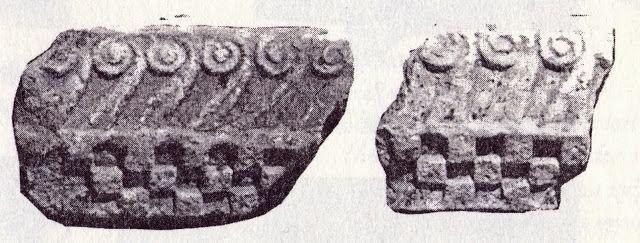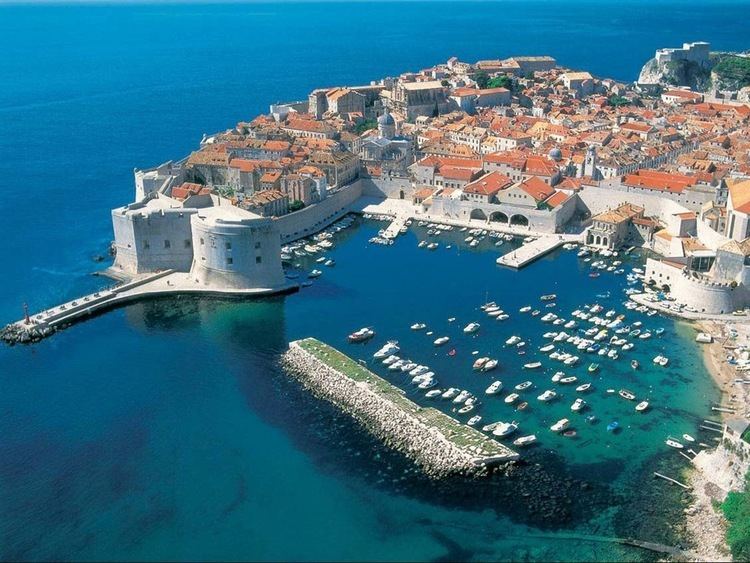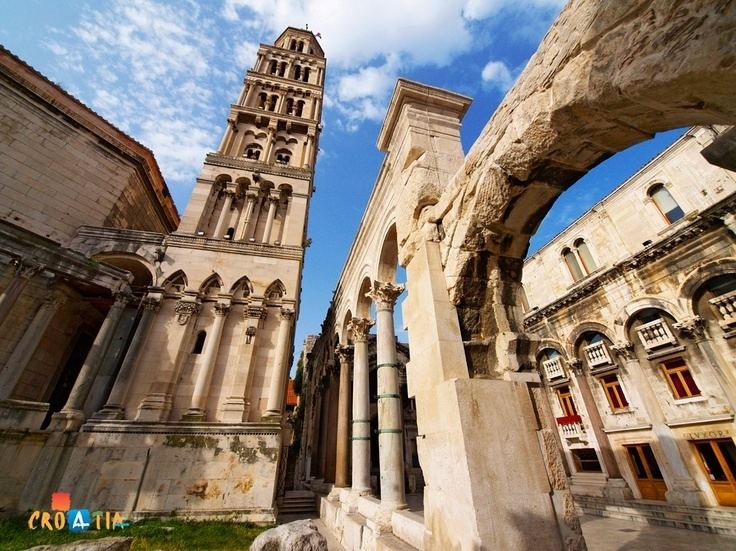Country Population 188,694 (2001) University University of Split Area 79.38 km2 | Founded 6th century BCE Mayor Ivo Baldasar (SDP) | |
Points of interest Diocletians Palace, Brac, Marjan, Cathedral of Saint Domnius, Ivan Mestrovic Gallery | ||
Split ( Italian: , see Name section) is the second-largest city of Croatia and the largest city of the region of Dalmatia. It lies on the eastern shore of the Adriatic Sea, centred on the Roman Palace of the Emperor Diocletian. Spread over a central peninsula and its surroundings, Splits greater area includes the neighboring seaside towns as well. An intraregional transport hub and popular tourist destination, the city is a link to numerous Adriatic islands and the Apennine peninsula.
Contents
- Map of Split Croatia
- Split croatia and a day trip to brac island
- Name
- History
- Geography
- Economy
- Culture
- Museums and galleries
- References
Map of Split, Croatia
Split is one of the oldest cities in the area. While it is traditionally considered just over 1,700 years old counting from the construction of Diocletians Palace in 305 CE, archaeological research relating to the original founding of the city as the Greek colony of Aspalathos (A????????) in the 4th century BCE establishes the urban history of the area as being several centuries older. The city turned into a prominent settlement around 650 AD, when it became successor to the ancient capital of the Roman province of Dalmatia, Salona: as after the Sack of Salona by the Avars and Slavs, the fortified Palace of Diocletian was settled by the Roman refugees. Split became a Byzantine city, to later gradually drift into the sphere of the Byzantine vassal, the Republic of Venice, and the Croatian Kingdom, with the Byzantines retaining nominal suzerainty. For much of the High and Late Middle Ages, Split enjoyed autonomy as a free city, caught in the middle of a struggle between Venice and the king of Hungary for control over the Dalmatian cities. Venice eventually prevailed, as Croatia and Hungary were ravaged by Ottoman incursions.
During the early modern period, Split remained a Venetian city, a heavily fortified outpost surrounded by Ottoman territory. Eventually, its hinterland was won from the Ottomans in the Morean War of 1699, and in 1796, as Venice fell to Napoleon, the Treaty of Campo Formio rendered the city to the Habsburg Monarchy. In 1805, the Peace of Pressburg added it to the Napoleonic Kingdom of Italy, and in 1809, after the Treaty of Schonbrunn, it was included directly in the French Empire, as part of the Illyrian Provinces. After Napoleons defeat in 1814, it was eventually granted to the Austrian Empire, where the city remained a part of the Austrian Kingdom of Dalmatia until the fall of Austria-Hungary in 1918 and the formation of Yugoslavia. During World War II, the city was annexed by Italy, then liberated by the Partisans after the Italian capitulation in 1943. It was then re-occupied by Germany, which granted it to its puppet Independent State of Croatia. The city was liberated again by the Partisans in 1944, and was included in the post-war Federal Yugoslavia, as part of its republic of Croatia. In 1991 Croatia seceded from Yugoslavia amid the Croatian War of Independence.
Split croatia and a day trip to brac island
Name
The city draws its name from the spiny broom (calicotome spinosa; brnistra or zuka in modern Croatian), a common shrub in the area, after which the Greek colony of Aspalathos (A????????) or Spalathos (????????) was named. As the city became a Roman possession, the Latin name became "Spalatum" or "Aspalatum", which in the Middle Ages evolved into "Aspalathum", "Spalathum", "Spalatrum", and "Spalatro" in the Dalmatian language of the citys Romance population. The Serbo-Croatian term became "Split" or "Spljet", while the Italian-language version, "Spalato", became universal in international usage by the Early Modern Period. In the late 19th century, the Serbo-Croatian name increasingly came to prominence, and officially replaced "Spalato" in the Kingdom of Yugoslavia after World War I.
For a significant period, the origin of the name was erroneously thought to be related to the Latin word for "palace" (palatium), a reference to Diocletians Palace which still forms the core of the city. Various theories were developed, such as the notion that the name derives from "S. Palatium", an abbreviation of "Salonae Palatium". The erroneous "palace" etymologies were notably due to Byzantine Emperor Constantine VII Porphyrogenitus, and were later mentioned by Thomas the Archdeacon.
History

Although the beginnings of Split are traditionally associated with the construction of Diocletians Palace in 305 CE, the city was founded in the 4th century BCE as the Greek colony of Aspalathos, or Spalathos. This was a colony of the polis of Issa, the modern-day town of Vis on the island of the same name. Issa itself was a colony of the Sicilian city of Syracuse, which was in turn originally founded by Corinth. Corinthians and Syracusans (as well as Issans) were Dorian Greeks.

The Greek settlement lived off trade with the surrounding Illyrian tribes, mostly the Delmatae. In time, the Roman Republic became the dominant power in the region, conquering the Illyrians in the Illyrian Wars of 229 and 219 BCE. Upon establishing permanent rule, the Romans founded the Province of Dalmatia. The city of Salona, only a short distance from Spalathos, became the capital of the province and evolved into a significant city in the Roman state. The history of Spalathos becomes obscure for a while at this point, being overshadowed by that of nearby Salona (to which it will later become successor).
The Roman Emperor Diocletian (ruled 284 to 305 CE) reformed the government in the late Roman Empire and established the Tetrarchy. This new system presupposed that Diocletian himself would retire at some point in favor of Galerius. Thus, in 293 CE, he began the construction of an opulent and heavily fortified palace near his home town of Salona, selecting the site of Spalathos (or Spalatum in Latin). The palace was built directly fronting the sea, so as to allow its occupant to escape by that means if necessary (in an era plagued by civil wars). The site was most likely chosen due to being near to Salona, but also with a secure port and a more immediate access to the open sea in the case of an attack. Following a bout of illness in 303 CE, Diocletian announced he would retire as soon as his Palace, scheduled for completion in 305 CE, was ready.
The Palace was built as a massive structure, much like a Roman military fortress. It faces the sea on its south side, with its walls 170 to 200 metres (570 to 700 feet) long, and 15 to 20 metres (50 to 70 feet) high, enclosing an area of 38,000 m² (9½ acres). The palace water supply was substantial, fed by an aqueduct from Jadro Spring, which supplies the city to this day. The palace and the city of Spalatum which formed its surroundings were at times inhabited by a population as large as 8,000 to 10,000 people. Diocletian established Marjan hill as a recreational area for the residents, a tradition which persists to this day. The palace was finished on schedule in AD 305. Diocletian accordingly retired, becoming the first Roman Emperor to voluntarily remove himself from office. Little is known what became of the palace after Diocletians death, though it is supposed to have fallen under the administration of the magistrates of Salona, and was gradually abandoned along with its surroundings. For a period one part of it seems to have been the site of a textile manufactory where Salonitan women worked.
The Palace was to have one further significant occupant, however: Flavius Julius Nepos, the last legitimate Emperor of the Western Roman Empire. By the late 5th century CE, the Western provinces of the Empire fell under the control of various Germanic confederations. Dalmatia (which had been considered a Western province since the reign of Theodosius I) eventually remained the only exception in that regard. From 468 CE, the Province was ruled by Julius Nepos, who was appointed Western Emperor in 473 CE by Leo I of the Eastern Court. He attempted to establish himself in the Western capital of Ravenna (right across the Adriatic from Salona), but was deposed within two years by his Germanic Magister militum, Orestes. He returned to Salona in 475 and took Diocletians Palace for his residence. Orestes installed his young son Romulus Augustulus as the Emperor in the West, but was murdered within a year (476 CE) by Odoacer and his son deposed. Thereupon Odoacer did not establish his own puppet emperor, but instead returned the Imperial regalia of the West to the Emperor in the East (that now being Emperor Zeno), effectively abolishing the Western Imperial throne. The Eastern Court in Constantinople, however, still recognized Julius Nepos as legitimate Western Emperor. From AD 475, Nepos therefore ruled from Diocletians Palace as effective "Emperor of Dalmatia". He was however murdered in the Palace by local political enemies in 480 CE, whereupon the two thrones of the Roman Empire were formally united under the Eastern emperors in Constantinople, who now became the sole Roman emperors. The Empire itself is henceforward more commonly referred to in historiography as the Byzantine Empire.
In 493 CE Salona, along with most of Dalmatia, was lost to the Ostrogothic Kingdom. However, by 535 CE the Emperor Justinian the Great was ready to attempt a reconquest of Roman lands held by the Ostrogoths. By July of the same year, the Roman general Mundus had quickly overrun Dalmatia and captured Salona. But a large Gothic army arrived to reclaim the province, and though he inflicted a heavy defeat upon them, Mundus himself was mortally wounded. As a result, the Roman army withdrew, and all of Dalmatia, with the exception of Salona, was abandoned to the Goths. Salona was then taken by the Gothic general Gripas. Justinian dispatched a new general, Constantianus, to recover Dalmatia, which he accomplished speedily. Gripas was forced to abandoned Salona because of the ruined state of its fortifications and the pro-Roman stance of its citizens. Constantinianus then occupied the city and rebuilt its walls. Seven days later, the Gothic army departed for Italy, so that by late June 536 CE Dalmatia was again in Roman hands.
Geography

Split is situated on a peninsula between the eastern part of the Gulf of Kastela and the Split Channel. The Marjan hill (178 m), rises in the western part of the peninsula. The ridges Kozjak (779 m) and its brother Mosor (1339 m) protect the city from the north and northeast, and separate it from the hinterland.
Economy
Splits economy is still suffering the backlash from the recession caused by the transfer to a market economy and privatization. In the Yugoslav era, however, the city had been a highly significant economic centre with a modern and diverse industrial and economic base, including shipbuilding, food, chemical, plastics, textile, and paper industry, in addition to large revenues from tourism. In 1981 Splits GDP per capita was 37% above the Yugoslav average. Today, most of the factories are out of business (or are far below pre-war production and employment capacity) and the city has been trying to concentrate on commerce and services, consequently leaving an alarmingly large number of factory workers unemployed.
Culture

In 1979, the historic center of Split was included into the UNESCO list of World Heritage Sites. Split is said to be one of the centres of Croatian culture. Its literary tradition can be traced to medieval times, and includes names like Marko Marulic, while in more modern times Split excelled by authors famous for their sense of humor. Among them the most notable is Miljenko Smoje, famous for his TV series Malo misto and Velo misto, with the latter dealing with the development of Split into a modern city.

Despite colorful settings and characters, as well as a cinema tradition that could be traced to early 20th-century works of Josip Karaman, there were relatively few films shot in or around Split. However, the city did produce several famous actors, most notably Boris Dvornik.
Also well known is Ivo Tijardovic, and his famous operetta "Little Floramye" (Mala Floramye). Both Smoje and Tijardovic are famous artists thought to represent the old Split traditions that are slowly dying out due to the city being overwhelmed by large numbers of rural migrants from the undeveloped hinterland.
Museums and galleries
The Archaeological Museum (Arheoloski muzej) main collection is housed at Zrinsko-Frankopanska 25 in Split. There is also a branch building in Solin (Salona and Tusculum Collection) and two regional centres at Vid near Metkovic (Narona Collection), and on the island of Vis (Issa Collection). The Split Archaeological Museum is the oldest museum institution in Croatia, founded in 1820 by the decree of the Dalmatian government in Zadar. Some 150,000 artifacts cover prehistoric times, the period of Greek colonization of the Adriatic, Roman Provincial and Early Christian era to the early Middle Ages and the period of Croatian popular rulers). Of special interest is the collection of stone inscriptions from Salona and the collections of Graeco-Hellenistic ceramic objects, Roman glass, ancient clay lamps, bone and metal articles, as well as the collection of gems. In addition, the museum houses an extensive collection of ancient and medieval coins, a submarine achaeological collection, and a rich archive library.
The Museum of Croatian Archaeological Monuments (Croatian: ) is the only museum in Croatia dedicated to researching and presenting cultural artifacts of the Croats in the Middle Ages, between the 7th and 15th centuries, particularly the time of the early medieval Croatian state from 9th to 12th century. The collection of early medieval wicker, clay figurines, and old Croatian Latin epigraphic monuments is the largest collection of its kind in Europe.
The Split City Museum (Croatian: ) at Papaliceva 1, is housed in the former Papalic Palace. The collection presents the urban, cultural, artistic and economic heritage of the city. The museum is also home to the Emanuel Vidovic Gallery, dedicated to the most important Split painter of the 20th century.
The Ethnographical Museum (Croatian: ) at Severova 1, has a wide range of ethnographic content mainly from Dalmatia. Founded in 1910, the museum collects original and contemporary applications of traditional heritage. They also track contemporary popular culture living with traces of old foundations and preserve and promote the value of folk heritage, renewing them and presenting exhibitions.
The Croatian Maritime Museum (Croatian: ) at Glagoljaska 18 - Tvrdava Gripe has a collection of marine equipment and supplies, weapons and navigation equipment, medals, ship models, uniforms and equipment, and related artwork. A permanent exhibition is planned to complete the presentation of military maritime and naval history, with a presentation that covers the period from the arrival of the Slavs to the present day.
Split Science museum and Zoo (Croatian: ) located at Kolombatovicevo setaliste 2 on the Marjan peninsula.
The Gallery of Fine Arts (Croatian: ), located at Kralja Tomislava 15, is an art museum that contains works from the 14th century to the present day providing an overview of the artistic developments in the local art scene. The gallery was founded in 1931, and has a permanent exhibition of paintings and sculptures that includes works by major Croatian artists such as Vlaho Bukovac, Mato Celestin Medovic, Branislav Deskovic, Ivan Mestrovic, Emanuel Vidovic and Ignjat Job. The gallery also has an extensive collection of icons, and holds special exhibits of works by contemporary artists. In May 2009, the gallery opened its new premises in the old Split Hospital building behind Diocletians Palace.
The Ivan Mestrovic Gallery (Croatian: Galerija Mestrovic), on the Marjan peninsula is an art museum dedicated to the work of the 20th-century sculptor, Ivan Mestrovic. The gallery displays some of his most significant work, and the building itself is an art monument. The permanent collection includes works of sculpture, drawings, design, furniture and architecture. The gallery building and grounds were based on original plans by Mestrovic himself, and included living and working areas, as well as exhibition spaces. Not far from the Gallery lies Kastelet-Crikvine, a restored chapel that houses a set of wooden wall panels carved by Ivan Mestrovic.
